


Framed or unframed, desk size to sofa size, printed by us in Arizona and Alabama since 2007. Explore now.
Shorpy is funded by you. Patreon contributors get an ad-free experience.
Learn more.

- The two front doors
- You are correct Dave.
- I was just there
- New to me
- Football-shaped thing
- Working all the live long day
- How do you stop slackers?
- It's [not] a Diamond T
- A Red Brown Truck
- Not Too Long a Long Walk
- What Tribe? Huh?
- Cheap labor
- No Mel Brooks fans?!?
- The real "Gandy"
- @louJudson
- Somethings not right
- Straining or laughing?
- Heavy!
- I don't like the look of that supervisor
- What tribe? Which rail location?
- How many do they need?
- Pursed lips
- Another lost street trade?
- Where Is The Carpet bag?
- Another great composition
- The Un-Coaler
- The Last Bickford's
- Re: And literally just around the corner
- Straight from Central Casting
- And literally just around the corner
Printporium
Carnival Ride From Hell: 1911
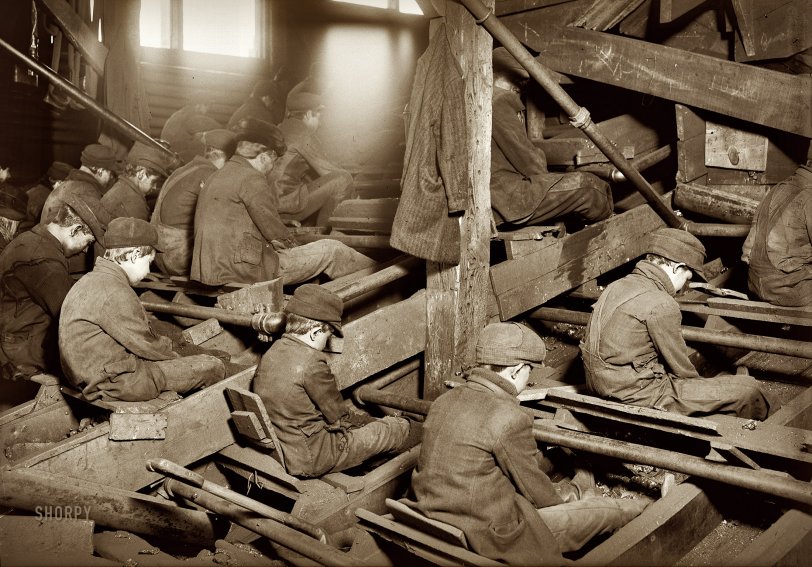
January 1911. South Pittston, Pennsylvania. "A view of the Pennsylvania Breaker. 'Breaker boys' remove rocks and other debris from the coal by hand as it passes beneath them. The dust is so dense at times as to obscure the view and penetrates the utmost recesses of the boys' lungs." Photo by Lewis Wickes Hine. View full size.
From the 1906 book The Bitter Cry of the Children by labor reformer John Spargo:
Work in the coal breakers is exceedingly hard and dangerous. Crouched over the chutes, the boys sit hour after hour, picking out the pieces of slate and other refuse from the coal as it rushes past to the washers. From the cramped position they have to assume, most of them become more or less deformed and bent-backed like old men. When a boy has been working for some time and begins to get round-shouldered, his fellows say that “He’s got his boy to carry round wherever he goes.”
- 20 comments
- Read more
- 90755 reads
Breaker Boys: 1911
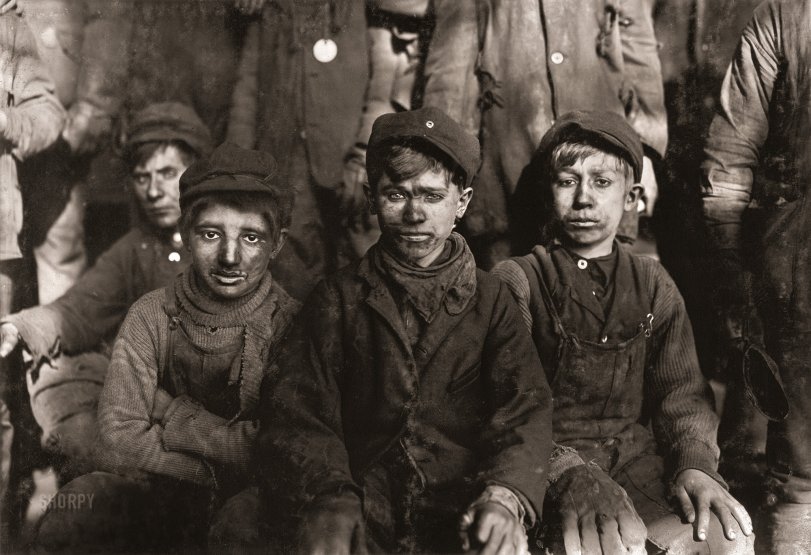
January 1911. "Group of boys working in No. 9 Breaker. Pennsylvania Coal Co., Hughestown Borough, Pittston, Pennsylvania. Smallest is Sam Belloma, Pine Street." Photograph by Lewis Wickes Hine for the National Child Labor Committee. View full size.
- 4 comments
- 12425 reads
Tobacco Tim: 1917
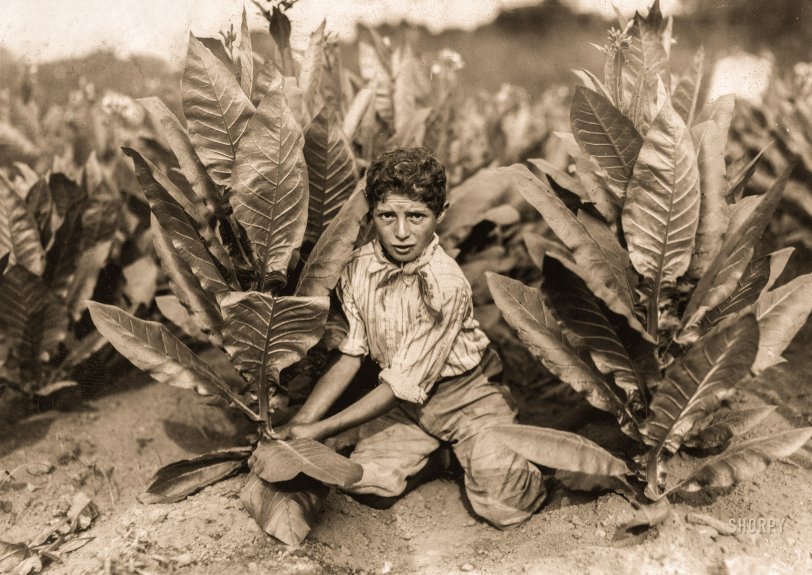
August 6, 1917. "10 year old picker on Gildersleeve Tobacco Farm. Gildersleeve, Connecticut." Photo by Lewis Wickes Hine for the National Child Labor Committee. View full size.
- 4 comments
- 10798 reads
Olden Arches: 1936
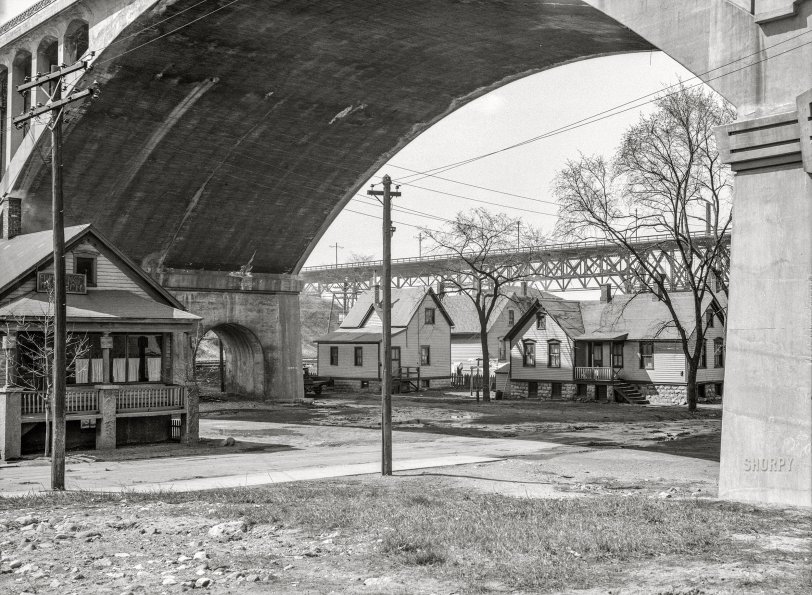
April 1936. "Housing conditions in crowded parts of Milwaukee. Housing under the Wisconsin Avenue viaduct." Another look at the F. Knop Tavern, last seen here. Nitrate negative by Carl Mydans for the Resettlement Administration. View full size.
- 2 comments
- 10131 reads
Terry's Coffee Shop: 1941
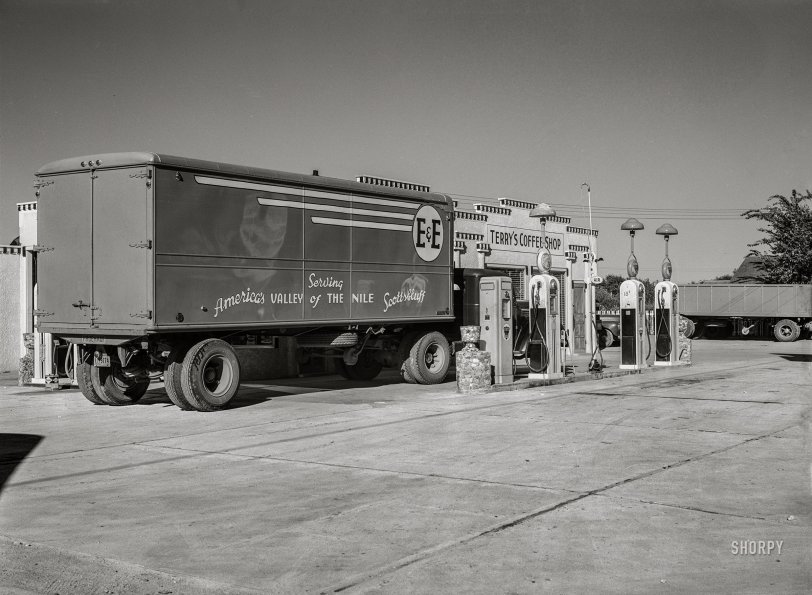
September 1941. "Transport truck in service station. Scottsbluff, Nebraska." Medium format acetate negative by Marion Post Wolcott for the Farm Security Administration. View full size.
- 7 comments
- 9952 reads
Cream City: 1936
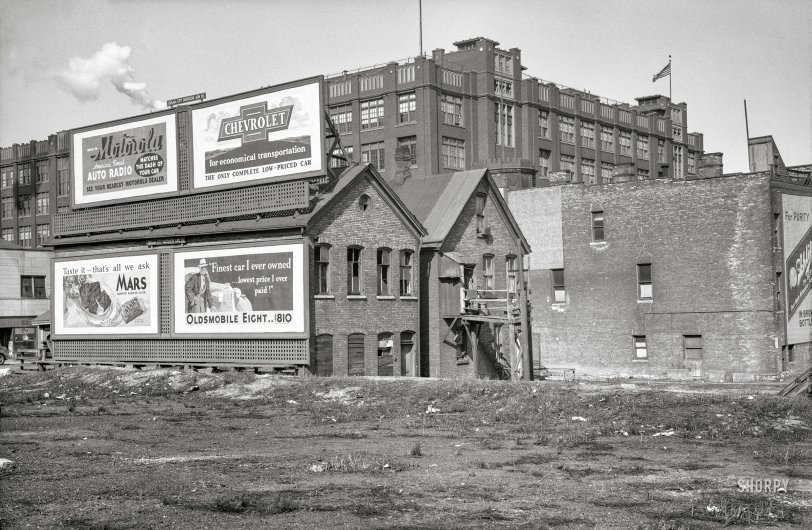
April 1936. "Rear of houses at 711 West State Street. Milwaukee Vocational School in background." Photo by Carl Mydans for the Resettlement Administration. View full size.
- 4 comments
- 12638 reads
F. Knop Tavern: 1936
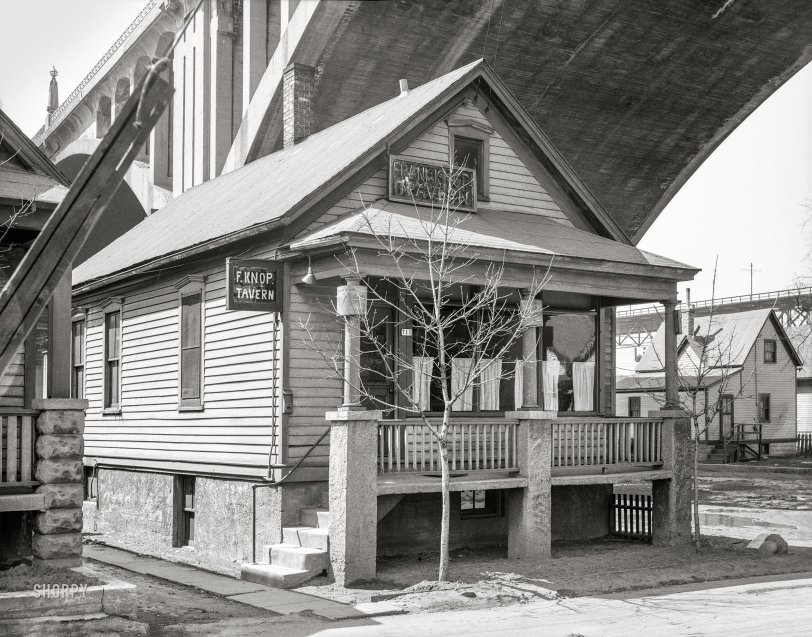
April 1936. "Housing conditions in crowded parts of Milwaukee. Housing under Wisconsin Avenue viaduct." Photo by Carl Mydans for the Resettlement Administration. View full size.
- 6 comments
- 12780 reads
Muskogee Yards: 1939
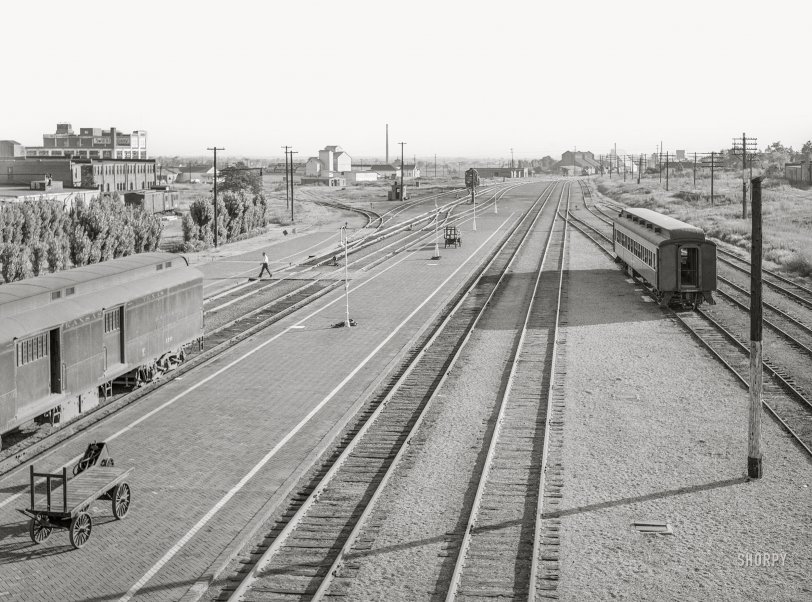
July 1939. "Railroad yards. Muskogee, Oklahoma." Medium format acetate negative by Russell Lee for the Farm Security Administration. View full size.
- 6 comments
- 9334 reads
Derby From Ansonia: 1940
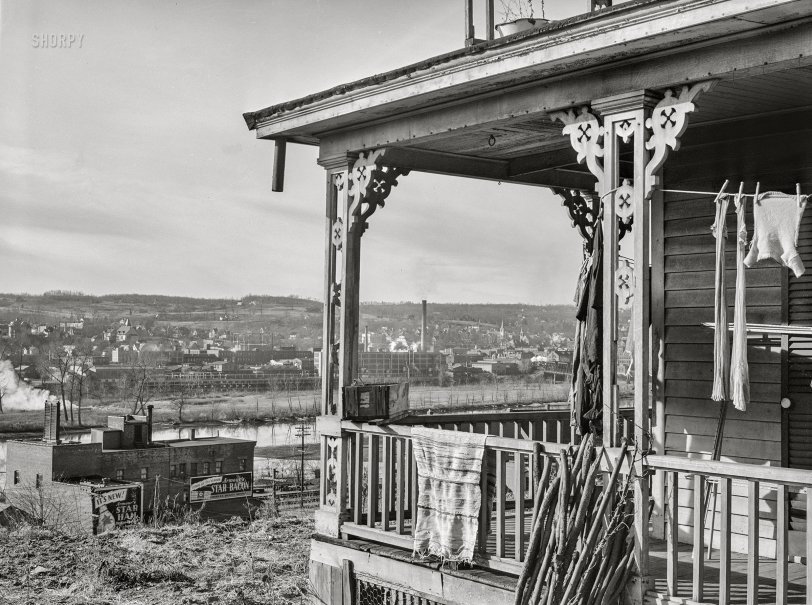
November 1940. "View of Derby, Connecticut, from the Ansonia side of the Naugatuck River." Acetate negative by Jack Delano for the Farm Security Administration. View full size.
- 6 comments
- 10799 reads
Pine Camp: 1941
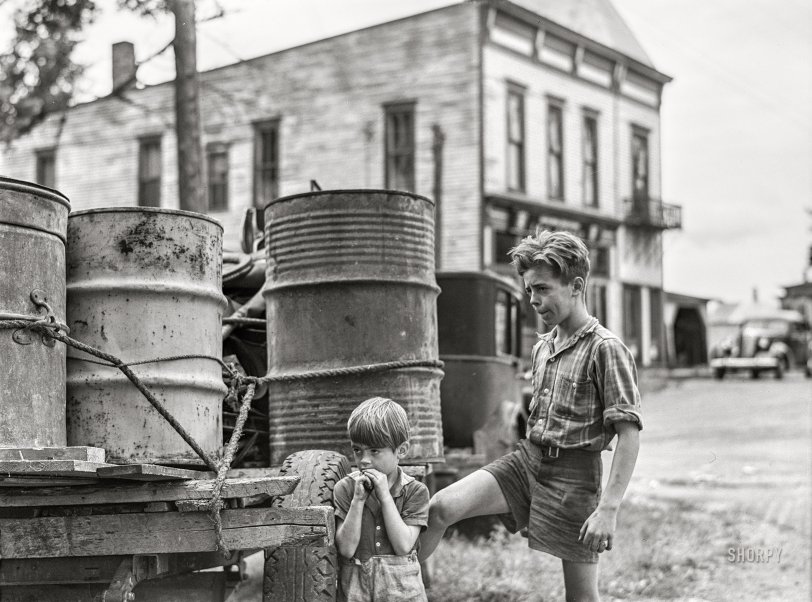
August 1941. "Pine Camp military area, near Watertown, N.Y. Removal of farm families and relocation in new sections with the aid of the New York Defense Relocation Corporation. Two of the children of Mr. Earl J. Brown helping to get the last few belongings out of their farm in the Pine Camp expansion area." Medium format acetate negative by Jack Delano. View full size.
- 1 comment
- 9340 reads
DeLand Links: 1905
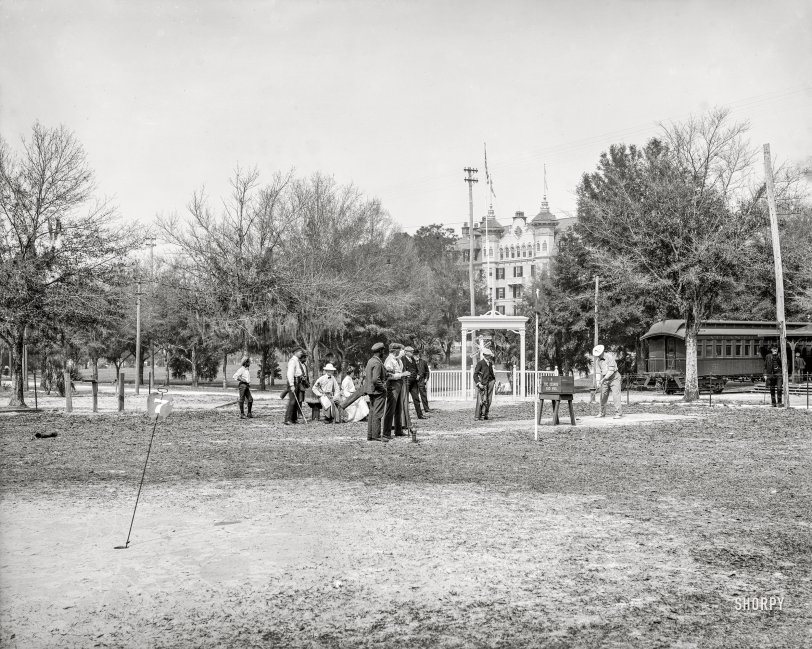
Circa 1905. "Golf -- College Arms Hotel, DeLand, Florida." Back before golf carts, there was the golf train. 8x10 inch dry plate glass negative, Detroit Photographic Company. View full size.
- 6 comments
- 9719 reads
Route 99: 1939
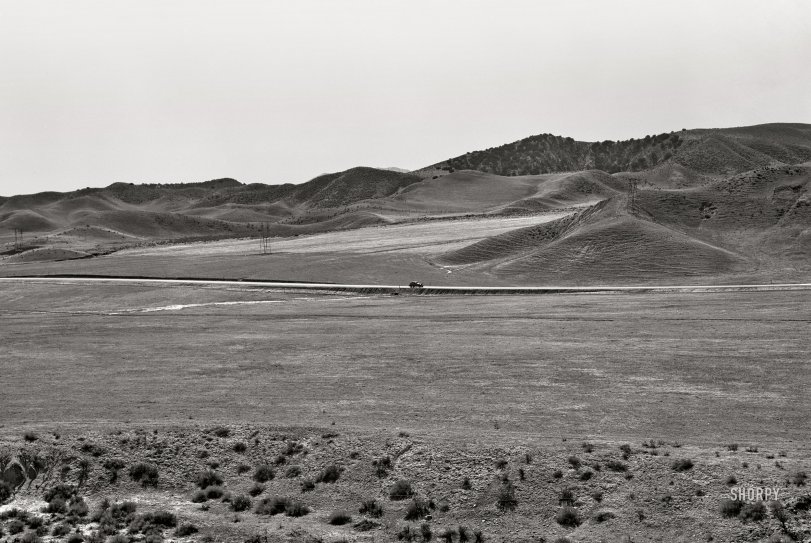
April 1939. "U.S. 99 on ridge over Tehachapi Mountains. Heavy truck route between Los Angeles and San Joaquin Valley over which migrants travel back and forth." 4x5 inch nitrate negative by Dorothea Lange for the Farm Security Administration. View full size.
- 8 comments
- 10248 reads
Manhasset 346: 1942
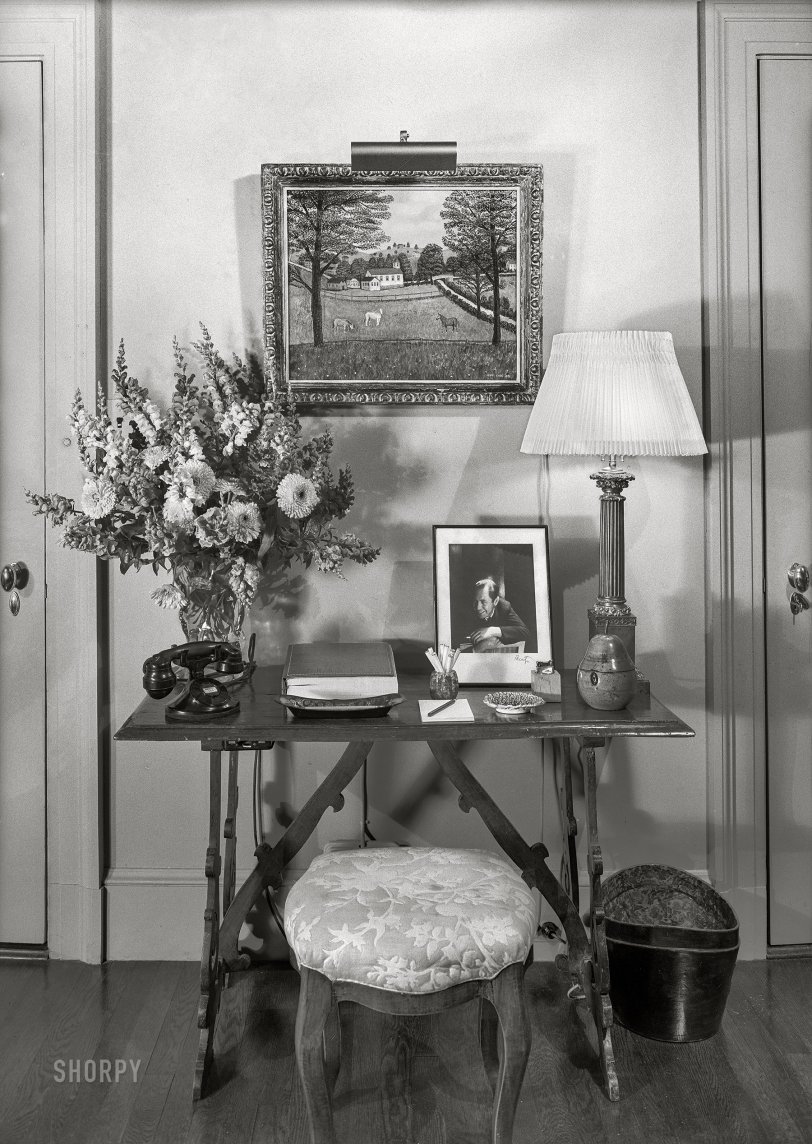
May 12, 1942. "William S. Paley, residence in Manhasset, Long Island, New York. Library, telephone table." 5x7 acetate negative by Gottscho-Schleisner. View full size.
- 15 comments
- 10195 reads
When Frilly Met Paley: 1942
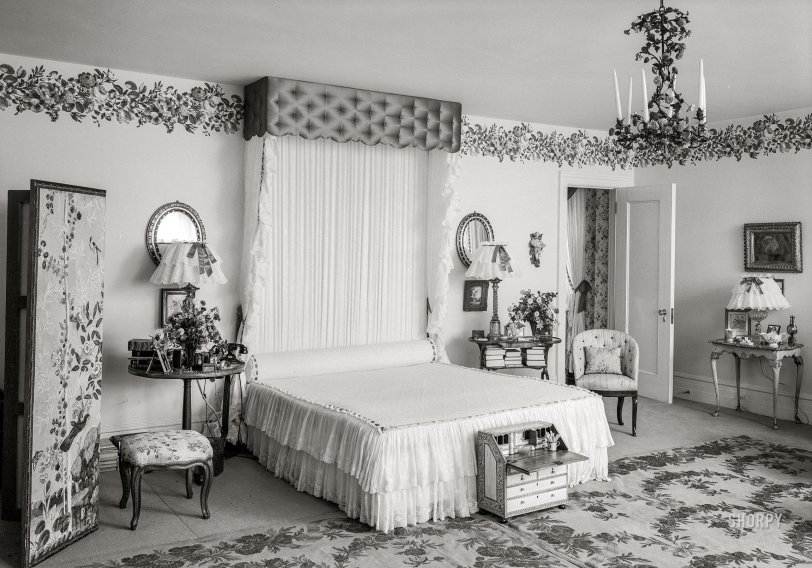
September 19, 1942. "William S. Paley, residence in Manhasset, Long Island. Mrs. Paley's bedroom, to bed." 5x7 acetate negative by Gottscho-Schleisner. View full size.
Dorothy Hearst Paley was sketched by Matisse, photographed by Cecil Beaton and Horst, listed as one of the world's best-dressed women and featured in Vogue and Harper's Bazaar. She decorated Kiluna Farm, the Paleys' 85-acre estate in Manhasset, with a saltwater pool and an indoor tennis court, lining the walls with their growing collection of Impressionist and Post-Impressionist paintings. Twenty-two servants looked after the house, gardens and greenhouse. (N.Y. Times)
- 8 comments
- 9467 reads
Chez Chintz: 1942
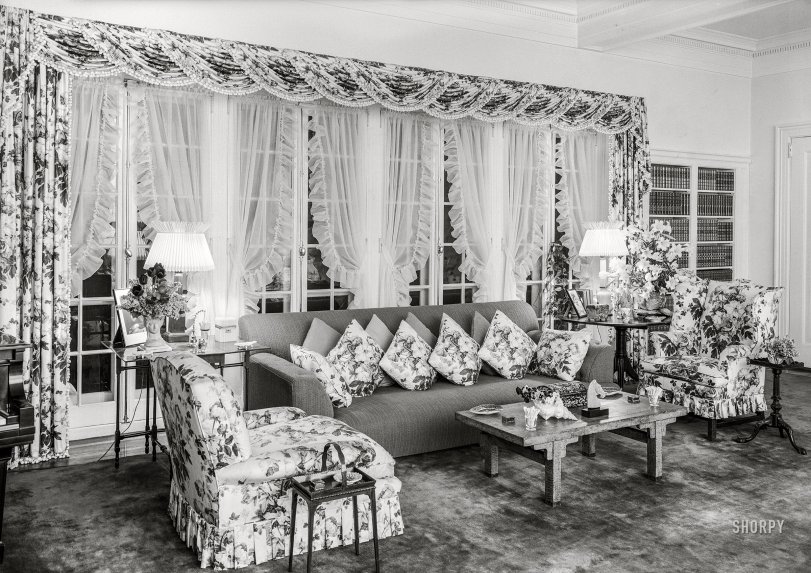
May 12, 1942. "William S. Paley, residence in Manhasset, Long Island, New York. Living room, to large window." Large-format acetate negative by Gottscho-Schleisner. View full size.
- 11 comments
- 10242 reads























